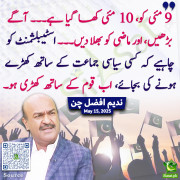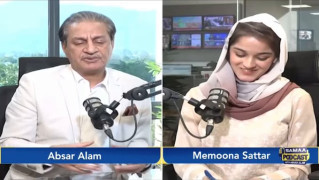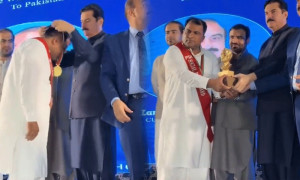RiazHaq
Senator (1k+ posts)
A Happy, Peaceful and Prosperous New Year to all my readers.
The year 2015 turned out to be a good year for Pakistan with the return of general optimism among businessmen, investors and consumers. Economic recovery continued as Pakistan Army's efforts, including its Operation Zarb e Arb and Karachi Operation by Rangers, started to bear fruit with significant decline in terrorism. There were new signs of a thaw in India-Pakistan ties with Indian Prime Minister Modi'
s surprise year-end visit to Lahore. Efforts to bring peace in Afghanistan took a new positive turn with the hopeful entry of the Taliban into a quadrilateral process involving Afghanistan, Pakistan, China and the United States. Threat of ISIS (Daish) presence rose in South Asia with reports of stepped up ISIS recruitment in Afghanistan and Pakistan.
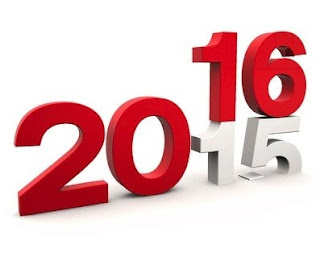
1. Pakistan economy neared the historic one trillion dollar mark in PPP terms in 2015. The nation's PPP GDP increased from $884 billion to $930 billion, an increase of $46 billion. Pakistan per capita PPP GDP is $4,902 for 2015, up from $4,749 in 2014, according to the IMF. Nominal GDP based on current exchange rates is reported at $270 billion in 2015, up from $246 billion in 2014, an increase of $24 Billion. Pakistan's per capita nominal GDP for 2015 is $1,427.085, up from $1,325.790 in 2014.
2. Pakistan's actual GDP is higher than what the official figures show, according to the State Bank of Pakistan. The SBP annual report for 2014 released in 2015 said: "In terms of LSM growth, a number of sectors that are showing strong performance; (for example, fast moving consumer goods (FMCG) sector; plastic products; buses and trucks; and even textiles), are either under reported, or not even covered. The omission of such important sectors from official data coverage, probably explains the apparent disconnect between overall economic activity in the country and the hard numbers in LSM."
3. Terrorism declined to the lowest level since 2006 as civilian deaths in terrorist incident nearly halved from 1781 in 2014 to 911 in 2015, according to South Asia Terrorism Portal.
[TABLE="class: tr-caption-container, align: center"]
[TR]
[TD]
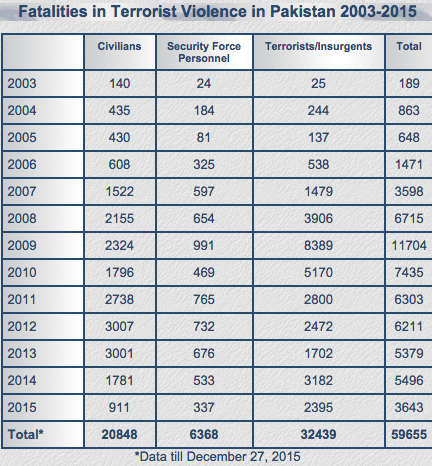
[/TR]
[TR]
[TD="class: tr-caption"]Source: South Asia Terrorism Portal[/TD]
[/TR]
[/TABLE]
4. China announced plans of massive $46 billion investment in the country as part of the China-Pakistan Economic Corridor (CPEC). Once completed, the this corridor with a sound industrial base and competitive infrastructure combined with low labor costs is expected to draw growing FDI from manufacturers in many other countries looking for a low-cost location to build products for exports to rich OECD nations.
[TABLE="class: tr-caption-container, align: center"]
[TR]
[TD]
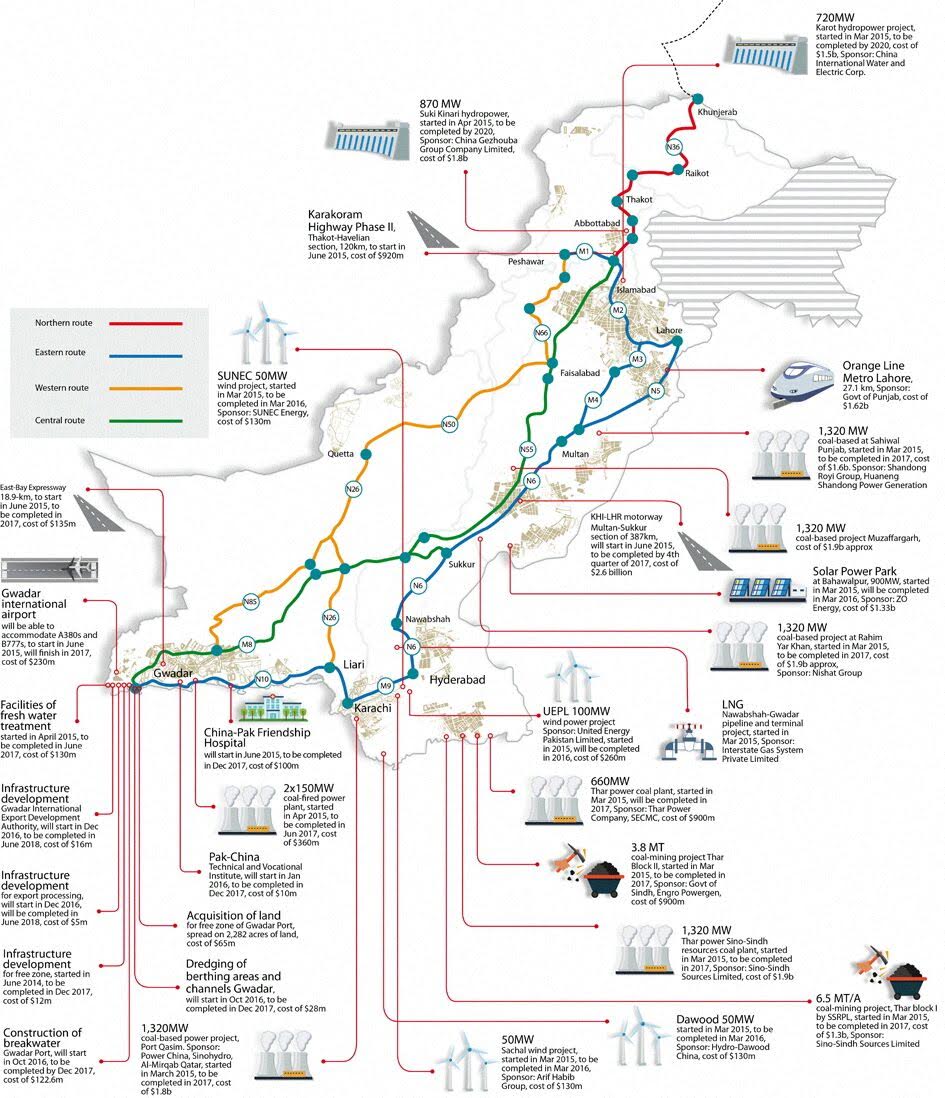
[/TR]
[TR]
[TD="class: tr-caption"]CPEC Projects Map[/TD]
[/TR]
[/TABLE]
5. Hopes for resolving Pakistan's energy crisis rose as liquified natural gas (LNG) priceshit historic new lows and hydrocarbon prices continued to plummet. An LNG terminalstarted operations at Port Qasim in Karachi and started receiving LNG cargoes.
6. Over 20 million users signed up for 3G and 4G mobile broadband services after initial rollout in late 2014. Double digit growth was recorded in cement consumption and automobile sales, all pointing to accelerating economic growth.
7. Enrollment in grades 13 through 16 exceeded 3 million mark in Pakistan's 1,086 degree colleges and 161 universities. The 3 million enrollment is 15% of the 20 million Pakistanis in the eligible age group of 18-24 years. In addition, there are over 255,000 Pakistanis enrolled in vocational training schools, according to Technical Education and Vocational Training Authority (TEVTA).
8. Prime Minister Nawaz Sharif launched a national health insurance plan in the closing days of 2015, further expanding a basic social safety net that started with Benazir Income Support program for the poor during the PPP years in power.
Lowlights:
1. Out-of-school children declined by just 1% as Pakistan continued to lag behind neighbors, particularly Bangladesh, India and Sri Lanka, on human development indices.
2. The latest human development report for 2015 from UNDP shows human development progress over several decades and confirms it's been the slowest in this decade. Pakistan's HDI grew 13% in 1980s, 11.2% in 1990s, 17.6% in 2000s, and just 3% since 2010. It grew the fastest when President Musharraf was in office from 2000 to 2008.
3. Several reports and arrests of ISIS sympathizes and fundraisers indicated rising threat in South Asia from the Iraq-Syria based terror group.
4. Many politicians, particularly in Sindh province, continued to hinder the Pakistan Army Rangers' efforts to bring peace to Karachi.
5. The implementation of National Action Plan to fight terror has received little more than lip service from the civilian leadership in the country, raising fears of the return of terrorism in the future.
Summary:
Decline of terrorism has enabled Pakistan's economy to begin to recover in 2015. It needs to be sustained for the long term. A basic requirement for sustainable development is investment in and focus on human resources of the country. Education and health care must receive top priority to build a peaceful and prosperous Pakistan.
Source
Last edited by a moderator:

